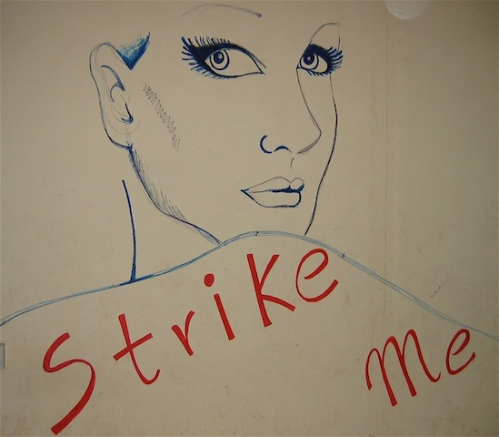“Breaking the cycle of poverty in Laos one family at a time.” That’s the mission of Bolaven Farms. Last May my husband Dave spent a week on a fair trade coffee plantation located on 410 acres of fertile land on the Bolaven Plateau in southern Laos.

Child on Bolaven Coffee Plantation Laos
He traveled there with twenty- four of his Hong Kong students to work at digging holes for coffee trees, building sheds and helping care for livestock.

My husband Dave helping children on the Bolaven Coffee Plantation in Laos learn English
Bolaven Farms is a cooperative that uses farming methods designed to sustain rather than deplete the rich nutrients in the Laotian soil. About 100 acres of the farm are devoted to grasses and legumes to restore nitrogen to the soil and provide fodder for livestock. The remainder is used for coffee growing.

Laotian families welcome Dave and his students to the coffee plantation
Up to fifty families at a time live on the Bolaven Farms coffee plantation and are taught how to grow coffee profitably and organically. They are given housing and earn a fair wage for the work they do. Medical care is provided and there is a school for the children.
If they ‘graduate’ from the agriculture program at Bolaven, families are eligible for a loan to buy a seven acre coffee farm of their own and can sell their coffee to Bolaven. Workers hand sort the coffee to ensure its quality before the beans are roasted, packaged, shipped and marketed as a fair trade product in other countries.
Sam Say is the founder of Bolaven Farms. He was born in Laos. He and his family fled the country in 1977 after a decade of heavy bombing by the United States and repeated invasions by the Vietnamese. The Say family spent two years in a refugee camp before a Mennonite Church in Calgary sponsored their immigration to Canada.
Sam eventually moved to Hong Kong and made a fortune as a commodities trader. He decided he wanted to use his wealth to help his fellow countrymen and women and so Bolaven Farms was born.

The Hong Kong students made friends with the coffee plantation workers
Sam Say’s son Christian used to be a student at the international school in Hong Kong where Dave and I were teachers. Christian played on the basketball team Dave coached.

Riding out to the plantation
Sam approached our school wondering if a group of our students would like to come to Bolaven Farms to work alongside the people there, befriend them, teach them some English and once they returned to Hong Kong spread the word about the project. Dave agreed to lead the trip.

Student building a shed on the coffee plantation
The work on the farm was very hard, and not at all what our students are used to. But they tackled their tasks with determination and energy.

Student housing on the coffee plantation
The students stayed in army barrack type housing and slept on air mattresses under mosquito netting. They showered communally with the Laotian workers. Every evening they performed plays, dances and songs for the plantation workers and their families. They tried to teach the children English.

Making friends with the children on the coffee plantation
Despite the language barrier the high school students developed a warm relationship with the Laotian farm families and Dave said some of the Hong Kong teens were in tears when it came time to say good-bye at the end of the week.

Students with Bolaven families
Dave found it inspiring to be at Bolaven Farms. Unlike many places we have visited in the third world where people living in desperate circumstances seem resigned to their lot in life, the people at Bolaven Farms are filled with optimism. They really believe they have an opportunity to create a better future for their families.
My thanks to the International Christian school students on the Laos trip who provided the photos for this post.
If you enjoyed this post you might also like…….
Kayaking in Laos
Missing Pacific Coffee
Dead Sea Beauty Treatment
Land Mines Museum- Second Visit







































